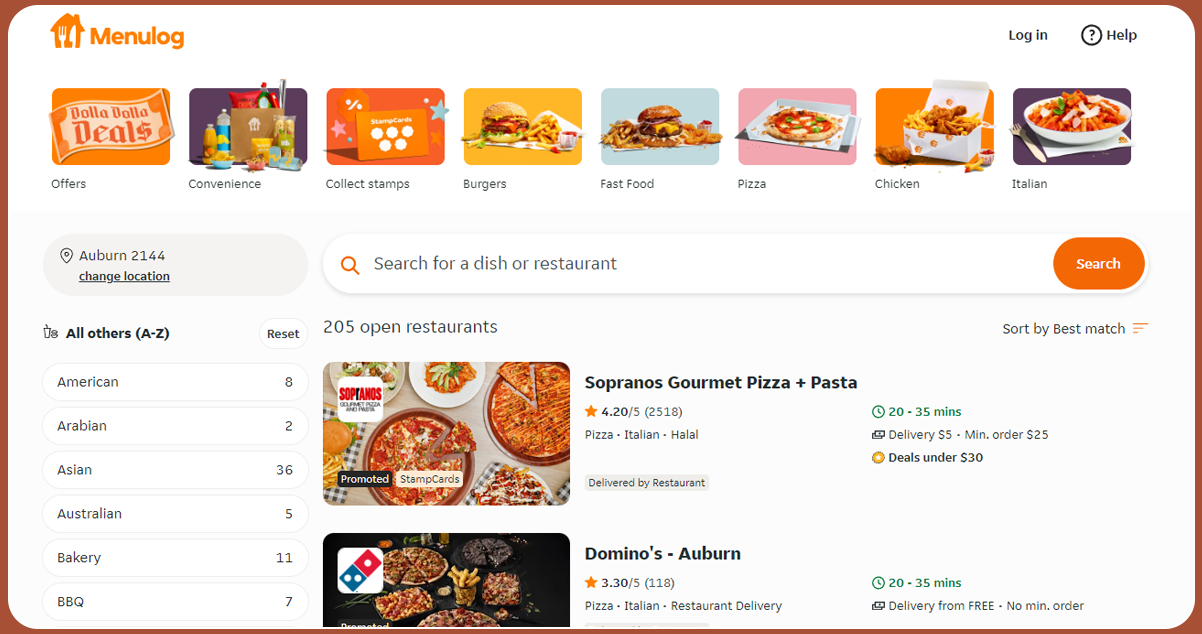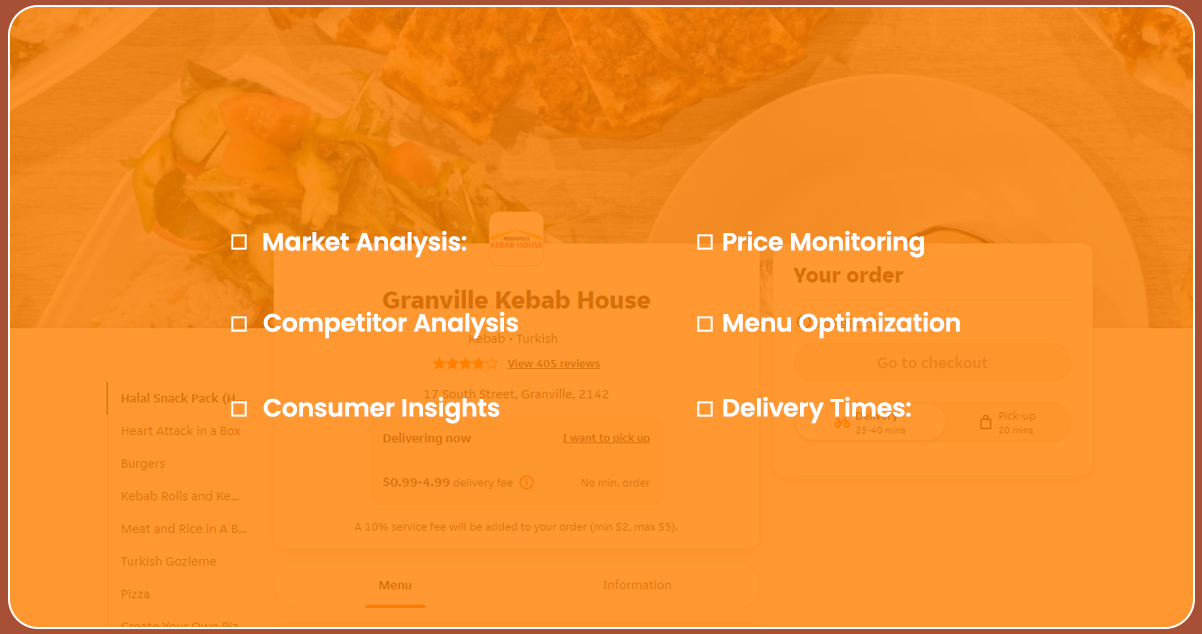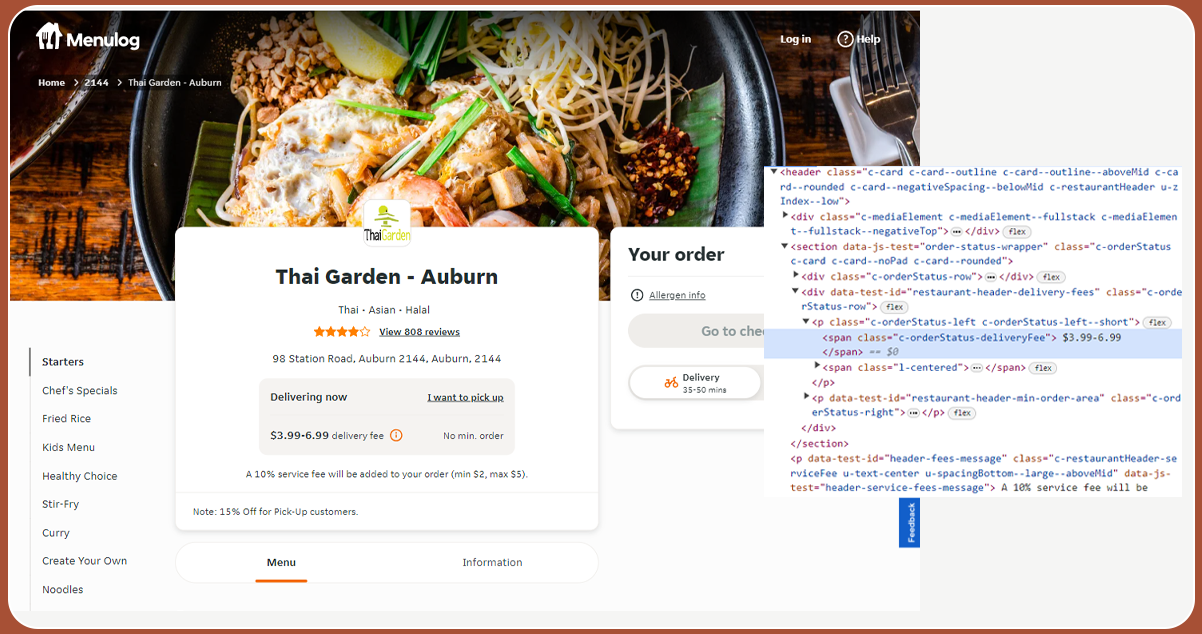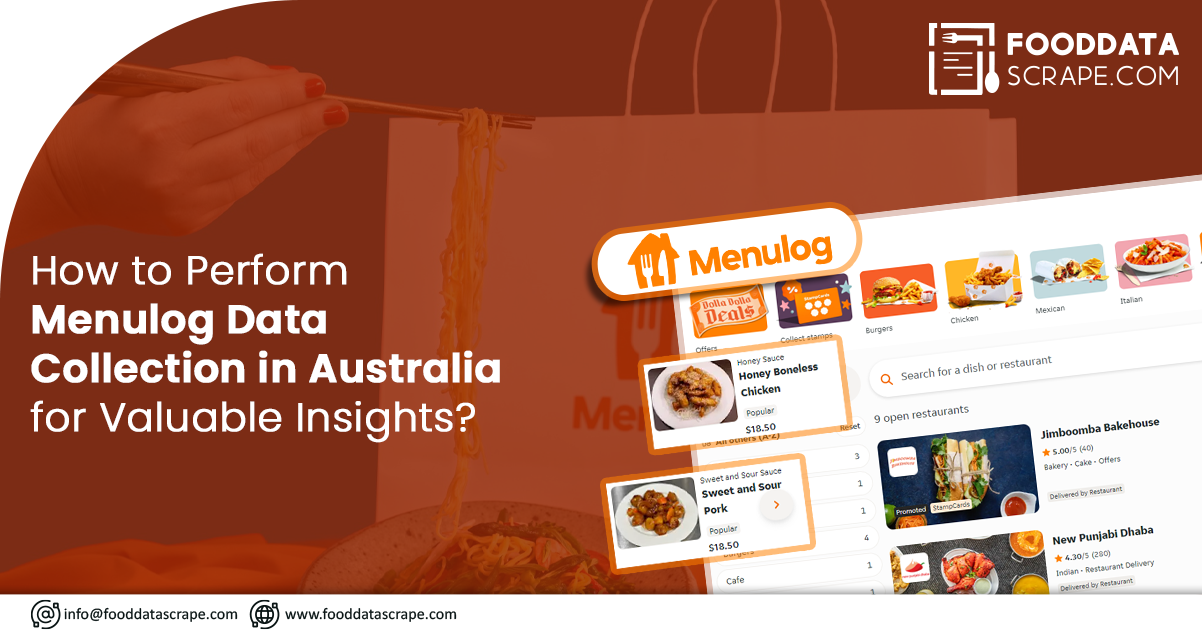In the era of digitalization, data has become the lifeblood of businesses and organizations, driving decision-making, strategy formulation, and innovation. The food delivery industry in Australia has not been immune to this trend, with Menulog emerging as a prominent player in the landscape. Menulog's platform offers convenient and diverse culinary delights from numerous restaurants nationwide. In this article, we will delve into scraping Menulog food delivery data in Australia and elucidate how to harness this data to gain valuable insights.
About Menulog Australia

Menulog is a leading online food delivery and takeaway platform in Australia. With an extensive network of partner restaurants across major cities, it offers diverse cuisines, making it a go-to choice for convenient dining. The user-friendly mobile app and website enable easy browsing of menus, ordering, and tracking deliveries. Menulog encourages user reviews and ratings, providing valuable feedback to restaurants. It also features promotions and loyalty programs catering to cost-conscious customers. The platform's prominence grew during the COVID-19 pandemic and continues to thrive in Australia's competitive food delivery landscape. Scrape Menulog data to gain a competitive edge in the food delivery business.
Menulog data collection in Australia presents a unique opportunity for businesses, researchers, and food enthusiasts seeking a deeper understanding of the culinary landscape Down Under. By extracting and analyzing this data, one can gain valuable insights into market trends, consumer preferences, and restaurant performance. From tracking menu items and prices to monitoring customer reviews and delivery times, web scraping Menulog provides a comprehensive view of the food delivery ecosystem. However, it's crucial to approach this process ethically, respecting Menulog's terms of use and data privacy regulations. With the right tools and methods, Menulog data scraping services can be a powerful resource for informed decision-making and strategic planning in Australia's ever-evolving food delivery industry.
Why Scrape Menulog Food Delivery Data?

Scraping Menulog food delivery data offers many advantages for businesses and researchers looking to dive deep into the intricacies of the food delivery industry in Australia. Here's a detailed breakdown of these benefits:
1. Market Analysis:
- For businesses in the food industry, understanding the market dynamics is crucial. By scraping restaurant data, companies can access a wealth of information on restaurant performance, customer preferences, and emerging trends.
- This data can be pivotal in making informed decisions about potential partnerships, such as which restaurants to collaborate with and crafting effective promotions and marketing strategies.
- It can also highlight expansion opportunities in regions with high demand or underrepresented cuisines.
2. Competitor Analysis:
- Competitor analysis is essential for businesses looking to stay ahead in a competitive landscape. Scraping food delivery data allows for a comprehensive examination of competing restaurants.
- It includes tracking menu items, prices, and user reviews, which are invaluable for assessing the competitive landscape. Understanding what dishes are in demand and what customers appreciate can inform a restaurant's menu offerings.
- It also opens the door to identifying opportunities for differentiation. Restaurants can tailor their offerings based on gaps in the market or unique selling points.
3. Consumer Insights:
- Understanding consumer behavior is pivotal for success in the highly competitive food delivery industry. Menulog's data scraping can unveil what customers are ordering, when they prefer to place orders and their specific preferences.
- With this insight, businesses can craft highly targeted marketing strategies. For example, they can time promotions and advertisements to cater to peak ordering periods or develop personalized offers based on individual preferences.
- It boosts customer engagement and leads to higher satisfaction levels.
4. Price Monitoring:
- The food industry is dynamic, with prices often fluctuating due to various factors like seasonal ingredients and market trends. Regularly collecting Menulog data allows businesses to stay on top of these changes.
- This real-time monitoring enables restaurants to adjust their pricing strategies accordingly. Whether reducing prices to attract more customers during off-peak hours or slightly increasing prices during high-demand periods, data-driven pricing decisions can boost profitability.
5. Menu Optimization:
- The success of a restaurant heavily relies on its menu. Menulog Food Delivery Scraping API can provide insights into which items are popular and which aren't.
- With this knowledge, restaurants can optimize their menus by refining their offerings. They can eliminate unpopular dishes, add new ones based on emerging trends, and ensure they offer customers the desired items.
6. Delivery Times:
- Timely deliveries are a cornerstone of customer satisfaction in the food delivery industry. By scraping Menulog data, businesses can analyze the timing of deliveries.
- This information can help them predict peak delivery times and allocate resources efficiently. With more staff and resources available during these times, restaurants can ensure that orders are delivered promptly, enhancing the overall customer experience.
Steps Involved in Scraping Menulog Data in Australia

Collecting Menulog data using a Menulog scraper is a systematic process that requires precision and adherence to ethical and legal standards. Here's a comprehensive guide on how to scrape Menulog data:
1. Choose the Right Tool:
The first step is selecting a suitable web scraping tool that aligns with your requirements. Popular choices include BeautifulSoup, Scrapy, and Selenium. These tools offer a range of features, from primary data extraction to more advanced tasks, depending on your needs.
2. Identify Your Data Targets:
Clearly define what specific data you intend to scrape from Menulog. It might encompass various information, including restaurant details, menu items, prices, user reviews, or user data. A precise definition of your data targets is essential to create a focused scraping strategy.
3. Crawl the Website:
- With your chosen web scraping tool, you must navigate Menulog's website and extract the desired data. The process might involve multiple steps, such as:
- Navigate through different web pages to access the information you need.
- Parsing and extracting text data, images, and other media content.
- Handle dynamic content, which may require interaction with the website, such as clicking on buttons or scrolling.
4. Data Cleaning and Storage:
- Once you've scraped the data, cleaning and formatting it is essential. Raw data often contains inconsistencies, duplications, or irrelevant information. Cleaning involves removing or rectifying such issues to make the data usable.
- After cleaning, the data should be structured and organized for storage and analysis. It typically involves creating a database or data repository. You can use databases like MySQL, PostgreSQL, or NoSQL databases like MongoDB.
5. Automation for Ongoing Data Collection:
- If you plan to scrape Menulog data regularly, automating the process is advantageous. It ensures that your information remains up-to-date and relevant. Automation can involve scheduling periodic scrapes or setting up alerts to trigger scraping on specific conditions.
- Automation saves time and ensures that your data analysis is on the most recent information.
6. Ethical Considerations:
- It's crucial to approach web scraping ethically and legally. Review Menulog's terms of use and privacy policies to understand their stance on data scraping. Avoid overloading their servers with excessive requests, as this can disrupt their operations.
- Also, be aware of data privacy regulations and ensure you're handling user data, if collected, with the utmost care and in compliance with relevant laws.
Conclusion: Scraping Menulog data is a valuable technique for businesses and researchers, adhering to ethical and legal standards. By choosing the right tools, defining your data targets, and handling data responsibly, you can harness the power of Menulog's data to gain insights and make informed decisions in the dynamic food delivery industry.
For more in-depth information, feel free to contact Food Data Scrape today! We're also here to assist you with any of your needs related to Food Data Aggregator and Mobile Grocery App Scraping service. We also provide advanced insights and analytics that offer valuable data-driven perspectives to drive informed decision-making and enhance business strategies.
Get in touch
We will Catch You as early as we recevie the massage
Trusted by Experts in the Food, Grocery, and Liquor Industry






























































































